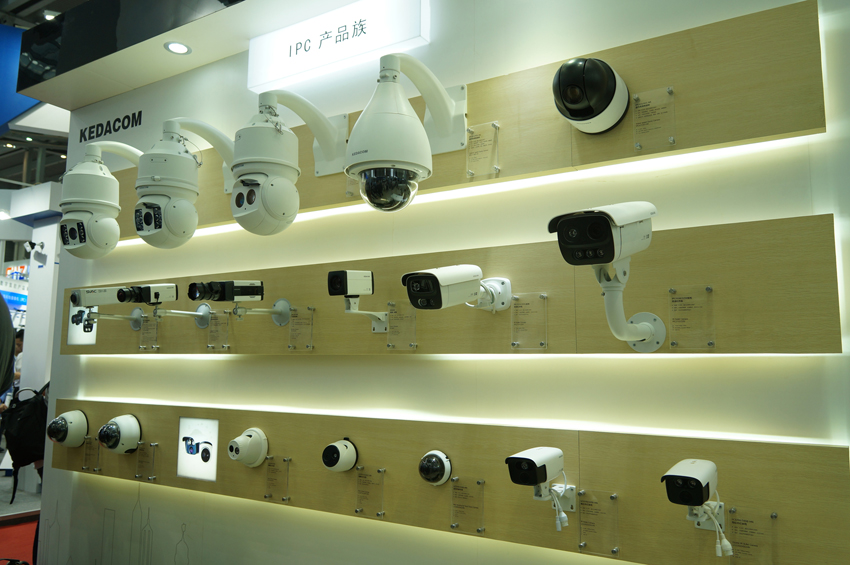
How to choose a network camera for video surveillance?
A network camera allows you to watch HD live video anywhere anytime, and record video footage in NVRs, Computers, smartphones or PCs. Some smart network cameras offer many amazing features including 2-way audio intercom, cloud storage, video social sharing, smart video analysis, motion detection, push notification, email alerts etc. Undeniable, A network camera becomes the essential electronics everyone has. With the variety of network cameras available, it is useful to have some guidelines when selecting a network camera.
#1. Define the surveillance goal
Overview or high detail. Overview images aim to view a scene in general or view the general movements of people. High detail images are important for identification of persons or objects (e.g., face or license plate recognition, point-of-sales monitoring). The surveillance goal will determine the field of view, the placement of the camera, and the type of camera/lens required. For more on lenses, see this article.
#2. Area of coverage
For a given location, determine the number of interest areas, how much of these areas should be covered and whether the areas are located relatively close to each other or spread far apart. The area will determine the type of camera and number of cameras required.
#3. HD, Full HD or 4K UHD
For instance, if there are two, relatively small areas of interest that are close to each other, a 4K UHD network camera with a wide-angle lens can be used instead of two 2.0 megapixel cameras.
#4. Fixed or PTZ
(In the following context, fixed cameras refer also to fixed domes and PTZ cameras refer also to PTZ domes.) An area may be covered by several fixed cameras or a few PTZ cameras. Consider that a PTZ camera with high optical zoom capabilities can provide high detail images and survey a large area. However, a PTZ camera may provide a brief view of one part of its area of coverage at a time, while a fixed camera will be able to provide full coverage of its area all the time. To make full use of the capabilities of a PTZ camera, an operator is required or an automatic tour needs to be set up.
#5. Indoor or outdoor environment
- - Light sensitivity and lighting requirements. In outdoor environments, consider the use of day and night cameras. Consider the light sensitivity of the camera required and whether additional lighting or specialized light such as IR lamps is needed. Keep in mind that lux measurements on network cameras are not comparable among different network video product vendors as there is no industry standard for measuring light sensitivity.
- - Housing. If the camera is to be placed outdoors or in environments that require protection from dust, humidity or vandalism, housings are required.
#6. Overt or covert surveillance
This will help in selecting cameras, in addition to housing and mounts, that offer a non-discreet or discreet installation.
#7. Image quality and Resolution
Image quality is one of the most important aspects of any camera, but it is difficult to quantify and measure it. The best way to determine image quality is to install different cameras and look at the video. If capturing moving objects clearly is a priority, it is important that the network camera uses progressive scan technology. For applications that require detailed images, megapixel cameras may be the best option.
#8. H.264 or H.265 Compression
The three video compression standards offered in network video products are H.264, H.265 and Motion JPEG. H.265 is the latest standard and offers the greatest savings in bandwidth and storage.
#9. Audio
If audio is required, consider whether one- or two-way audio is needed. Axis network cameras with audio support come with a built-in microphone and/or an input for an external microphone and a speaker or a line out for external speakers.
#10. Event management and intelligent video
Event management functionalities are often configured using a video management software program and are supported by input/output ports and intelligent video features in a network camera or video encoder. Making recordings based on event triggers from input ports and intelligent video features in a network video product provides savings in bandwidth and storage use, and allows operators to take care of more cameras since not all cameras require live monitoring unless an alarm/event takes place.
#11. Networking functionalities
Considerations include PoE; HTTPS encryption for encrypting video streams before they are sent over the network; IP address filtering, which gives or denies access rights to defined IP addresses; IEEE802.1X to control access to a network; IPv6; and wireless functionality. For more on networking and security technologies, see Chapter 9.
#12. Open interface and application software
A network video product with an open interface enables better integration possibilities with other systems. It is also important that the product is supported by a good selection of application software, and management software that enable easy installation and upgrades of network video products.
Another important consideration, outside of the network camera itself, is the selection of the network video product vendor. Since needs grow and change, the vendor should be seen as a partner, and a long-term one. This means that it is important to select a vendor that offers a full product line of network video products and accessories that can meet the needs now and well into the future. The vendor should also provide innovation, support, upgrades and product path for the long term. Once a decision has been made as to the required camera, it is a good idea to purchase one and test its quality before setting out to order quantities of it.
Get My Latest Posts
Subscribe to get the latest updates.
Your email address will never be shared with any 3rd parties.